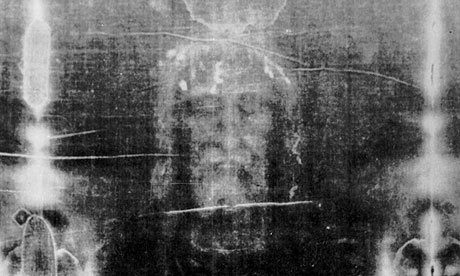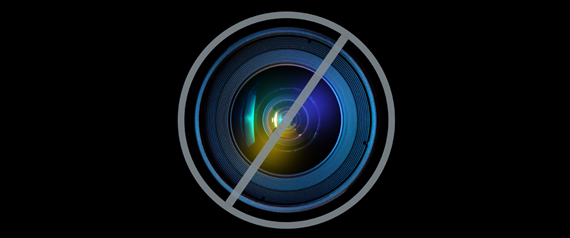Repeat Irish drink drivers to face a rehab and have car ‘alcolocks’ installed


Private Irish speed camera vans may be used to catch drivers using mobile phones or not wearing seatbelts.
And repeat drink-drivers will be forced to install “alcolocks” in their cars and undergo rehab courses as part of their punishment under the Government’s new road safety strategy.
Learner drivers will be prosecuted if their accompanying qualified passenger fails a breath test, and will have to sit a test before they can renew their learner permit.
And cyclists will for the first time be hit with on-the-spot fines.
Launching the strategy yesterday, Transport Minister Leo Varadkar said he was worried about the rise in road deaths so far this year after a record reduction last year.
Injuries
Fifteen more people have died on Irish roads so far this year – 48 to date – compared with the same period last year.
“That really worries me,” said the minister at the Dublin Castle launch that coincided with an EU conference there on serious injuries.
Measures in the Government Road Safety Strategy 2013-2020 include:
• Private GoSafety speed camera vans to detect other offences such as not wearing seatbelts, out of date tax discs or no NCT or insurance discs.
• Mandatory alcolocks – devices into which drivers blow, and their car will only start if no alcohol is detected, for repeat drink-drivers. This will be a sentencing option for judges.
• Rehab and driving awareness courses for repeat drink-drivers.
• On-the-spot fines for cyclists who run traffic lights or commit other offences. Currently, they are prosecuted, though it rarely happens.
• Five new motorway service stations to combat tiredness.
• Employers asked to install a device in company vehicles so drivers can use mobile phones only when the handbrake is on.
• A requirement that the Garda Traffic Corps is not further reduced in numbers.
• New laws to prevent car write-offs being re-sold.
• In-vehicle devices which sense tiredness will be encouraged.
• Ban on people selling goods or collecting for charity on roads is being considered.
The strategy, which runs until 2020, aims to reduce road deaths to fewer than 124 and serious injuries to fewer than 330 a year.
Road Safety Authority (RSA) chairman Gay Byrne said there would be a major emphasis on lowering the incidence of serious injuries, which “changed lives forever”.
Gardai will be told to treat and investigate all road deaths as unlawful killings. They will also have the power to check mobile phone records in fatal crashes.
Speeding lorry drivers will also be targeted, and ambitious targets will be set for reducing serious injuries that can leave victims in life-changing circumstances.
With the introduction of lower drink-driving limits, penalty points and an improved driver training programme, reducing injuries will be a priority.
The conference heard yesterday that for every person killed on Europe’s roads, there are 10 serious injuries such as damage to the brain or spinal cord.
Irish Revenue has issued over 1 million local property tax letters


OVER 1M LOCAL PROPERTY TAX LETTERS HAVE BEEN ISSUED TO PROPERTY OWNERS AROUND THE COUNTRY, ACCORDING TO THE REVENUE COMMISSIONERS.
The deadline for paying the tax is 28 May. The tax is self-assessed, but the letters include the amount of tax Revenue will take unless the owner declares what they think the property is worth and what band it falls into.
Revenue’s valuation guidance site has received in excess of 750,000 hits.
So far, over 25,000 people have paid the tax; 15,000 electronically and 10,000 by paper.
There has been some criticism of the valuations provided by Revenue, with suggestions that in some cases they are too high.
Revenue has acknowledged that there may have been mistakes in some of the letters.
There have been reports in recent days that some teenagers have been asked to pay the tax.
Revenue has also said that due to the lack of a complete property register, some tenants, instead of their landlords, may have received letters.
It has asked that anyone who has received such letters make contact so that records can be corrected.
Turin shroud makes rare appearance on TV amid claims that it is not a forgery

Cloth seen by Catholics as burial shroud of Jesus, and medieval forgery by scientists, to be shown on TV for first time in 30 years
The Shroud of Turin came from Europe and made between 1260 and 1390, according to a scientific study in 1988. Photograph: Barrie Schwortz/AP
The shroud of Turin is to be shown on television for the first time in 40 years on Easter Saturday as a new claim that the four-metre-long linen cloth dates from ancient times proves its enduring ability to fascinate and perplex.
As what the Vatican described as his parting gift to the Roman Catholic church before he resigned, Benedict XVI signed off on a special 90-minute broadcast of the shroud that will take place from Turin Cathedral and be introduced in a brief preamble by his successor, Pope Francis.
“It will be a message of intense spiritual scope, charged with positivity, which will help hope never to be lost,” said the archbishop of Turin, Cesare Nosiglia.
Timed to mark the 40th anniversary of the shroud’s last appearance on TV – ordered by Pope Paul VI in 1973 – the unusual programme on Italian state broadcaster Rai comes as the new pope, the former cardinal Jorge Bergoglio, prepares for his first Easter as head of the world’s 1.2 billion Roman Catholics.
It also comes amid new claims that the piece of fabric, which many Catholics believe Jesus was buried in, does indeed date from around his lifetime. Previous tests apparently confirmed the shroud to be a clever medieval forgery.
Giulio Fanti, associate professor of mechanical and thermal measurement at Padua University, claims tests had shown that the cloth, which bears the image of a man’s face and body, dates from between 280BC and 220AD.
Fanti claims that the carbon-14 dating used in a landmark study in 1988 was “not statistically reliable”. That study claimed that the shroud actually dated from the Middle Ages. But the mystery of the cloth has lingered ever since.
The Vatican does not have a position on its authenticity. When he was still cardinal Joseph Ratzinger, the previous pope wrote that the shroud was “a truly mysterious image, which no human artistry was capable of producing”.
Fanti’s results are detailed in a new book, Il Mistero della Sindone (The Mystery of the Shroud), written by him and journalist Saverio Gaeta.
Although it is rarely displayed, Catholics and historians keen for a closer look at the shroud will be able to study it at their leisure with the help of a new app launched on Friday. Users of smartphones and tablets will be able to download the multilingual application for free and examine detailed images of the shroud courtesy of high-definition technology.
On Thursday the Catholic church’s first Latin American leader celebrates the Holy Thursday mass in a youth detention centre on the outskirts of Rome, where he will wash the feet of a dozen prisoners, two of whom were women.
On Friday he will lead a Good Friday procession from the Colosseum marking the stations of the cross and on Easter Sunday he will celebrate mass in St Peter’s square and give the traditional Urbi et Orbi – “to the city [of Rome] and to the world”– blessing. Tens of thousands of pilgrims are expected to attend.
Eating more fiber may lower your chances of a stroke


Increasing your fiber intake may decrease your stroke risk. A new study shows that each seven-gram increase of fiber intake was associated with a 7 percent decrease in first-time stroke risk.
Dietary fiber — which is found in fruits, vegetables, whole grains and legumes — is the part of the plant that your body doesn’t absorb during digestion. Not only does it make you feel full faster, it aids in digestion and helps prevent constipation. To eat seven grams, you’ll have to consume one serving of whole wheat pasta plus two servings of fruits or vegetables.
Studies have shown that fiber can reduce risk factors for stroke like high blood pressure and high blood levels of low-density lipoprotein (LDL) “bad” cholesterol, the study authors pointed out. Strokes kill 130,000 Americans each year, or 1 in 18 deaths, according to the Centers for Disease Control and Prevention.
“Greater intake of fiber-rich foods — such as whole-grains, fruits, vegetables and nuts — are important for everyone, and especially for those with stroke risk factors like being overweight, smoking and having high blood pressure,” lead author Diane Threapleton, M.Sc., Ph.D. candidate at the University of Leeds’ School of Food Science & Nutrition in Leeds, United Kingdom, said in a press release.
Researchers looked at eight studies published between 1990 and 2012 that looked at all kinds of strokes. Four specifically analyzed risk of ischemic stroke — when a clot blocks a blood vessel from bringing blood to the brain — which accounts for 87 percent of strokes. Three looked at hemorrhagic stroke, which is when a blood vessel bursts. The researchers looked at all the findings together and factored in other stroke risk factors like age and smoking.
Fiber can come in two forms, soluble (which means it can dissolve in water) and insoluble. Total dietary fiber increases were shown to make a difference, but it was unclear which form helped more.
The authors noted that American women consume about 13 grams of fiber, and men eat about 17 grams a day. The American Heart Association recommends at least 25 grams per day, which equals six to eight servings of grains and eight to 10 servings of fruits and vegetables.
“(Increasing) seven grams a day increase is an achievable goal,” senior author Victoria J. Burley, a senior lecturer in nutritional epidemiology at the University of Leeds in England, said to the Los Angeles Times. “You’re talking about swapping white bread for whole wheat or increasing vegetable and fruit by two portions a day.”
Lona Sandon, a registered dietitian and an assistant professor of clinical nutrition at the University of Texas Southwestern Medical Center in Dallas, told HealthDaythat this shows that choosing healthier options like a plant-based diet can help people, because Americans don’t eat enough fruits and vegetables.
“In the end this is about getting down to basics: eating four to five cups of fruit a day, making half your grains whole grains, that kind of thing,” Sandon, who was not involved with the study, said. “If you want to be healthy, we know this works.”
Google breaks the mould with affordable laptop

The dismissive chuckles and guffaws that greeted the iPad at launch have come back to haunt rival computer makers. It was variously described as underpowered, artificially limited and no threat.
History has proved them all wrong as the iPad won fans in part for its simplicity, amid the realisation that many people want a petite but powerful machine just for email, web browsing, entertainment and light computer duties.
Google has taken note. It is already building a following in Android tablets, but its latest tilt at world domination targets the small laptop market.
Starting with the notion that many users need little more than a web browser, Google built an entire operating system called Chrome OS that essentially runs in a browser. Then it partnered with Samsung and others to create the Chromebook, an 11-inch laptop that bears a striking resemblance to a premium MacBook Air.
But the best part is yet to come: the latest Samsung one costs just €280.
For the money, you’re getting a solidly built machine (albeit one made of plastic rather metal) with enough horsepower for everyday tasks, boots in seconds and lasts six hours on battery power.
It comes with two huge caveats, though. The Chrome OS needs a constant internet connection to perform most tasks – without it, its uses are limited.
Secondly, the Chromebook runs only apps for Chrome – not Windows, not Mac, not Android
Obviously, the usual bases – email, documents, etc – are covered by Gmail, Google Docs and the like. But you may chafe at the relatively limited app catalogue.
None of this is to detract from the sheer value offered by the Samsung. As the iPad demonstrated, such purity of purpose and elegant design will appeal to a broad cross-section of the population.
No comments:
Post a Comment